The demand for higher quality car hands-free voice systems is growing. Many governments have passed or are considering legislation to prohibit the use of handheld mobile phones during driving. In addition, automakers are responding to consumer demand for higher performance in-vehicle communications and audio systems. However, mobile vehicles create an unfavorable environment for mobile voice communication technology. In particular, echoes and very noisy roads are coupled to car noise, reducing the sound quality of the call. To improve the performance of the hands-free car kit, designers must find a solution that eliminates echo, reduces background noise, and enhances intercom performance through full-duplex operation.
This article refers to the address: http://
Hands-free communication requirements
Early hands-free car kit solutions were only available in limited markets. The main reason is that many hands-free car kits on the market today use technologies originally developed for speakerphones that cannot support high-quality voice communications. The voice quality of these hands-free car kits is much worse than cellular voice calls. In general, in this type of hands-free car kit design, the need for low cost outweighs the performance requirements. For example, a low-end car kit will only support half-duplex operation, which means that only one person can speak at a time. However, this situation is changing. With the implementation of government legislation around the world, drivers who want to communicate in a mobile vehicle will have to install a hands-free car kit. In this way, consumers will need better performance hands-free communication technology.
Although Bluetooth headsets have caused some storms in the hands-free communication market, the hands-free car kit can provide some more important performance and better security. The high-performance car hands-free kit will provide better voice quality than the Bluetooth headset solution. In terms of security and ease of use, hands-free car kit users can take calls with little or no action. In contrast, using a Bluetooth headset requires looking for the headset and placing it in the correct position to answer the call.
Acoustic echo source
Inside the car, there are two acoustic echo sources—direct acoustic coupling between the speaker and the microphone, causing the voice signal to reverberate in the cabin. Acoustic echoes are primarily derived from direct acoustic coupling, which occurs when the microphone picks up a speech signal directly from the speaker. This situation usually becomes larger in the interior environment because the volume of the hands-free car kit is set higher to overcome noise from the engine and the road surface.
The second source of acoustic echo is indirect coupling or cabin reflection. The audio signal is reflected on various surfaces in the car. The intensity of the echo depends on the type of material used in the car. The harder the surface, the more audio it reflects, and the softer the surface, the more echo it absorbs. For example, a car seat will absorb more echoes, while a car window will reflect more echoes. Further complicating is that the echo caused by reflection inside the car is also delayed. The amount of echo delay will vary with the size of the car and the materials used. Figure 1 shows direct acoustic coupling and cabin reflection echo.
Noise source
Whether it's a vehicle-generated or ambient-generated noise, it's a big challenge for a hands-free car kit to successfully eliminate them. It is important to note that the magnitude of these noises is constantly changing. The most important noise sources in the car include:
Engine Noise Engine noise generated during vehicle operation can degrade the voice quality performance of a communication system. The engine noise reaches its peak level when the car accelerates, which is even more pronounced during the rapid acceleration of the sports car.
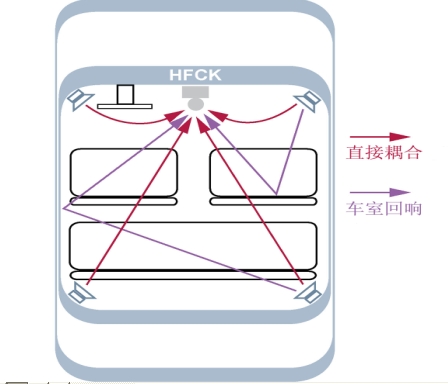
Figure 1: Direct coupling and cabin reverberation are the two sources of acoustic echo in the car.
Road noise The friction between the tire and the road surface produces noise. The intensity of the noise depends on the tire tread, the pavement material, and the season. For example, summer tires are quieter than winter tires, and asphalt roads are quieter than concrete roads.
Wind noise Air flows through the car and hits a protruding part, such as a rear view mirror or a roof rack, or winds up when driving. Wind noise varies from vehicle to vehicle. For example, a sleek sports car is less windy than an SUV. Wind noise is also limited by the amount of sound insulation installed by the car manufacturer. High-end luxury cars have better sound insulation than smaller cars with lower cost. In addition, driving the window will cause a large pressure difference between the inside and outside of the vehicle body.
Noise suppression algorithms can be used to reduce the effects of wind noise, road noise, and engine noise on the sound quality of a communication system. For wind noise with high sound pressure, for example, when the vehicle speed exceeds 100 km/h and the window is open, the analog front end circuit will be saturated, causing the speech signal to be clipped. Signal clipping also reduces the overall performance of the echo cancellation (AEC) and total noise suppression circuitry.
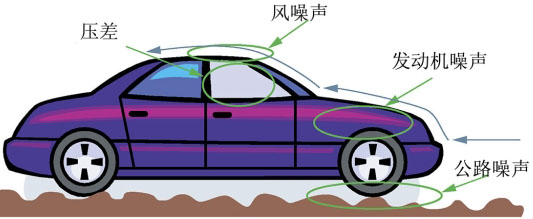
Figure 2: Noise sources that challenge the design of hands-free vehicle communication systems
There are two options for solving this problem: The first option is to design the input circuit for the worst case and set the microphone gain to the level at which the input signal will never be clipped. However, this will cause the dynamic range of the analog-to-digital converter to shrink and the signal-to-noise ratio to deteriorate, thereby deteriorating the overall performance of the AEC. Deterioration of AEC performance is acceptable in noisy environments because residual echoes are overwhelmed by background noise. However, in a quiet environment, the residual acoustic echo appears to be more pronounced, making the deteriorated performance unacceptable. For example, if the audio path is in-vehicle noise and a signal that is 30 dB higher, the designer can attenuate the input gain by 30 dB to cancel the noise. However, when the car is parked and the noise source disappears, the SNR will be 30 dB higher than the actual demand. Excessive SNR will reduce the performance of acoustic echo cancellation.
Another problem set to high gain is the change in voice level during a call. When we talk, we adjust our voice level according to the noise situation. In the cabin, if the design is for the worst-case noise condition, although good performance can be obtained when the noise inside the vehicle is large, the performance is degraded when the noise is small.
The ideal solution is to dynamically change the microphone gain depending on the environment. If the system uses a simple analog gain controller to detect and control the microphone gain, it will be equivalent to controlling the change in the echo path and will force the AEC to reconverge.
Car noise is usually low frequency. Many hands-free car kits use high-pass filters to filter out car noise. The high-pass filter filters out most of the noise but affects the quality of the speech. To achieve high performance, the algorithm must be designed to distinguish between speech and noise signals and to filter out noise from the total signal. A good noise suppression algorithm should strike a balance between filtering out noise and maintaining speech signal integrity.
To achieve the desired performance, the system designer must use Automatic Gain Control (AGC) for the microphone input signal (Sin). The AGC avoids signal clipping while maintaining a total gain setting determined by the user. Using an analog automatic control gain (controlled by the digital signal processor) on the microphone input and using an algorithm that compensates for steep echo path changes (which usually leads to reconvergence) will prevent the signal from being clipped.
This method allows the ADC to have a maximum dynamic range under a variety of environmental conditions. Allows the caller to speak in a normal voice, regardless of the noise situation inside the car.
Echo cancellation and full duplex operation
Figure 3 shows the basic block diagram of the hands-free car kit.
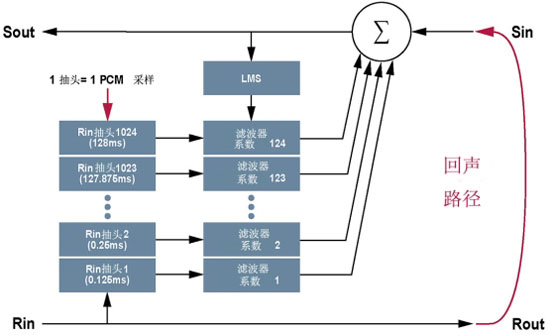
Figure 3: Block diagram of the hands-free car kit for the car
The echo cancellation circuit eliminates echoes generated by the environment. If a cellular phone with an analog port is used to connect to the car kit, a line echo canceller will be required to eliminate the echo produced by the side tone on the analog port. If a cellular phone with a Bluetooth connection is used to connect to the car kit, the side tone will no longer exist and therefore the line echo canceller will not be needed. In the echo cancellation circuit, the acoustic echo cancellation module is responsible for reducing the acoustic echo; the nonlinear processor is responsible for eliminating the residual echo; and the noise suppression module is responsible for reducing the background noise.
Other important features of the high-performance car kit are full-duplex operation and good intercom performance. The full-duplex car kit allows simultaneous transmission of two-way voice signals, supporting natural conversations. Currently, most commercial vehicle kits use a half-duplex avoidance mode that allows only a single direction to transmit voice signals during communication. At this time, in the intercom case, only the signal with the highest power level will be sent, causing the call to be intermittent.
Even with full-duplex communication, most of the current full-duplex algorithms perform poorly in intercom conditions. When the intercom stops, these duplex algorithms freeze the adaptive function and the algorithm will have to re-adapt to the echo environment. This will result in a sudden echo at the end of the single lecture and during the intercom. In order to maintain high performance during intercom, the algorithm must continue to converge and track changes in the echo path.
Acoustic echo canceller
Acoustic echo cancellers and nonlinear processors are key components of the full-duplex algorithm. Figure 4 shows a block diagram of an acoustic echo cancellation circuit.
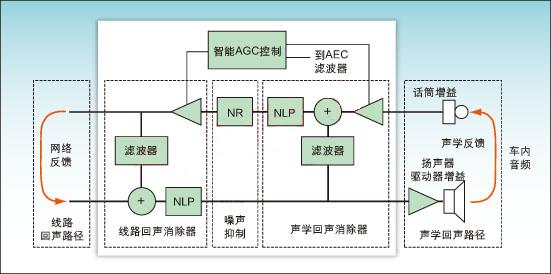
Figure 4: Echo block diagram for eliminating acoustic echo
The acoustic echo cancellation circuit uses a Least Mean Square (LMS) filter, or a similar type of filter, to generate an echo signature signal model. The echo signature signal is used to estimate the echo signal subtracted from the input signal in the echo path. The algorithm continuously tracks changes in echo characteristics and updates the estimated echo.
When the echo path is linear, the echo cancellation effect is good, but in non-ideal conditions (such as the intercom case), it starts to deteriorate. During the intercom, in order to avoid the deterioration of the cancellation effect, many manufacturers use the full-duplex algorithm to freeze the adaptive function and stop the tracking of the source, but to cancel the echo according to the features acquired before the adaptive function is frozen. Thus, when the characteristics of the source signal change during the intercom, the algorithm will not be able to track it, and a residual echo or burst echo will occur. In order to achieve optimal echo cancellation performance, the algorithm must continue to converge under intercom conditions.
Nonlinear processor
Any acoustic echo canceller is not perfect. It is impossible to accurately estimate the nonlinearity of the echo path. The nonlinear source is quantized in the codec and clipped and distorted in the echo path. Usually an acoustic echo canceller can only cancel up to 30dB of echo. To achieve better performance, a nonlinear processor (NLP) must be used to reduce echo and process nonlinearities.
A simple NLP is an active switch. When the single-talk period is activated, the NLP opens the path and injects comfort noise for excellent voice quality. In the intercom, the system will rely entirely on the echo canceller.
Many acoustic echo cancellers rely primarily on NLP to achieve fast convergence and mask the poor performance of the echo canceller. However, if the NLP is turned off fast enough, it will result in a voice interruption during the intercom. If the NLP is used to mask the poor performance of the echo canceller, a large residual echo will occur in the talkback condition. Typically, commercial echo cancellers will give echo reflection loss (ERL) parameters that reflect echo cancellation and NLP performance. However, this parameter does not reflect the performance of echo cancellation during intercom.
AEC and NLP should interact as follows: AEC tracks changes in the echo path and continually converges during intercom, while NLP masks AEC deficiencies by further reducing echo and processing nonlinear effects.
Clipping compensation
The performance of the hands-free car kit is based on the quality of the end user's voice signal. If a hands-free car kit is designed to meet the worst-case conditions in a car when it is closed, the design will not meet the requirements when the car is windowed. When the window is open, the wind will greatly increase the noise signal level, at which point the signal from the microphone will be clipped and the analog to digital converter will also be overloaded.
Figure 5 shows a signal that is severely clipped.
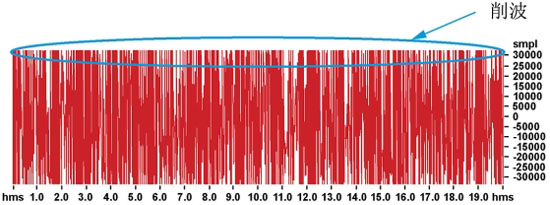
Figure 5: Signal waveform after severe clipping caused by strong noise
The speech and background noise signals appear to be identical, and the circuit is almost incapable of distinguishing speech from background noise. Under these conditions, the AEC will not converge on the echo, and the noise suppression algorithm will not be able to easily distinguish the background noise and reduce it. Figure 6 shows the same signal processed by the noise suppression algorithm without clipping compensation. The result is that the signal is still clipped and the noise is still high.

Figure 6: Results of a severely clipped signal processed by a noise suppression algorithm without clipping compensation
Figure 7 shows the same signal processed by the noise suppression algorithm with clipping compensation. Under these conditions, AEC works very well because it eliminates signal clipping.

Figure 7: Results of a severely clipped signal processed by a noise suppression algorithm with clipping compensation
Summary of this article
From the above, it can be found that for the high-performance hands-free vehicle communication kit, it is necessary to have good noise suppression, acoustic echo cancellation, intercom performance and clipping compensation performance. To achieve these high performance, good AGC, AEC, NLP and excellent performance of the clipping compensation circuit are indispensable. The single-chip device family of hands-free communication applications developed by Zarlink Semiconductor is designed to achieve the above high performance. The company's latest hands-free solution, the ZL38004, is a dedicated voice processor that combines an integrated dual-channel codec with multiple interfaces and supports echo cancellation, noise suppression and clipping compensation. The chip's patented software algorithm continuously tracks changes in the echo path, keeping track of it even during intercom, and reducing background noise while maintaining high speech quality. Even with low voice signals, the ZL38004 platform will operate full-duplex, allowing natural two-way conversations.
The Description of 3G Rubber Antenna:
The 3G Rubber Antenna is a multiband Covert Omni Antenna that allows the use of multiple frequency bands with a single antenna. Suitable for Frequencies: HSDPA, UMTS (3G) (1920-2770 MHz), GSM (2G) 900 (824-960 MHz), DCS 1800 (1710-1880 MHz)
3G Rubber Antenna Polarization: Vertical | 3G Rubber Antenna Connector Type: Customized | Impedance:50 ohm | VSWR:2 Input
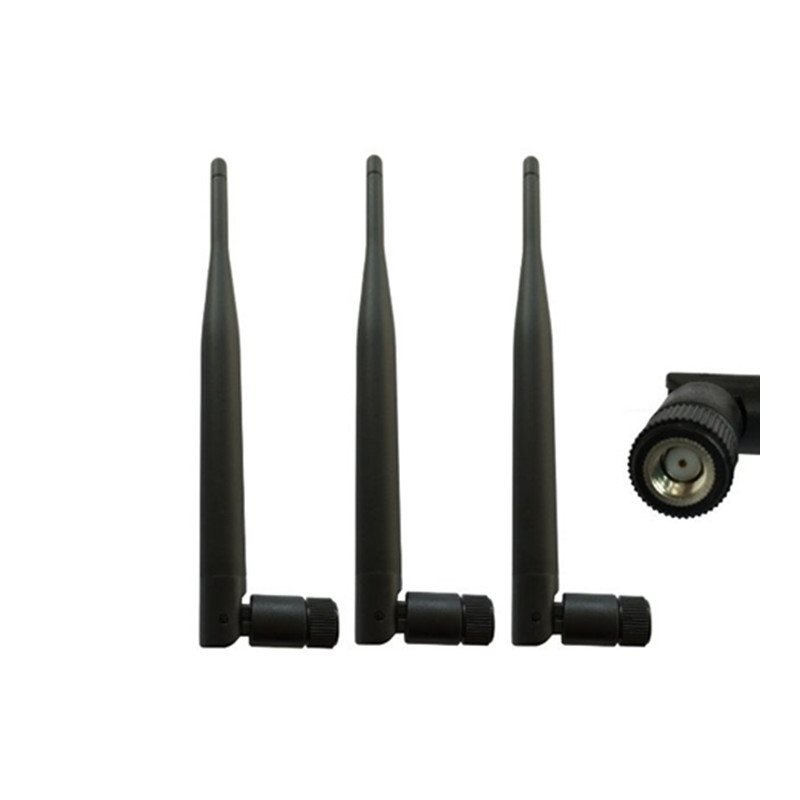
The Advantage of 3G Rubber Antenna:
1,Rich experience , proven technique
2,Reasonable price
3,Wider frequency
4,OEM/ODM available
5,Perfession servie
6,ISO:9001 certification
7,1 year guarantee
8,Fast delivery time
9,R&D
10,Huge Capacity
3G Rubber Antenna
3G Rubber Antenna,Black Rubber Antenna,Folding Rubber Antenna,Omni 3G Antenna
Shenzhen Yetnorson Technology Co., Ltd. , http://www.yetnorson.com